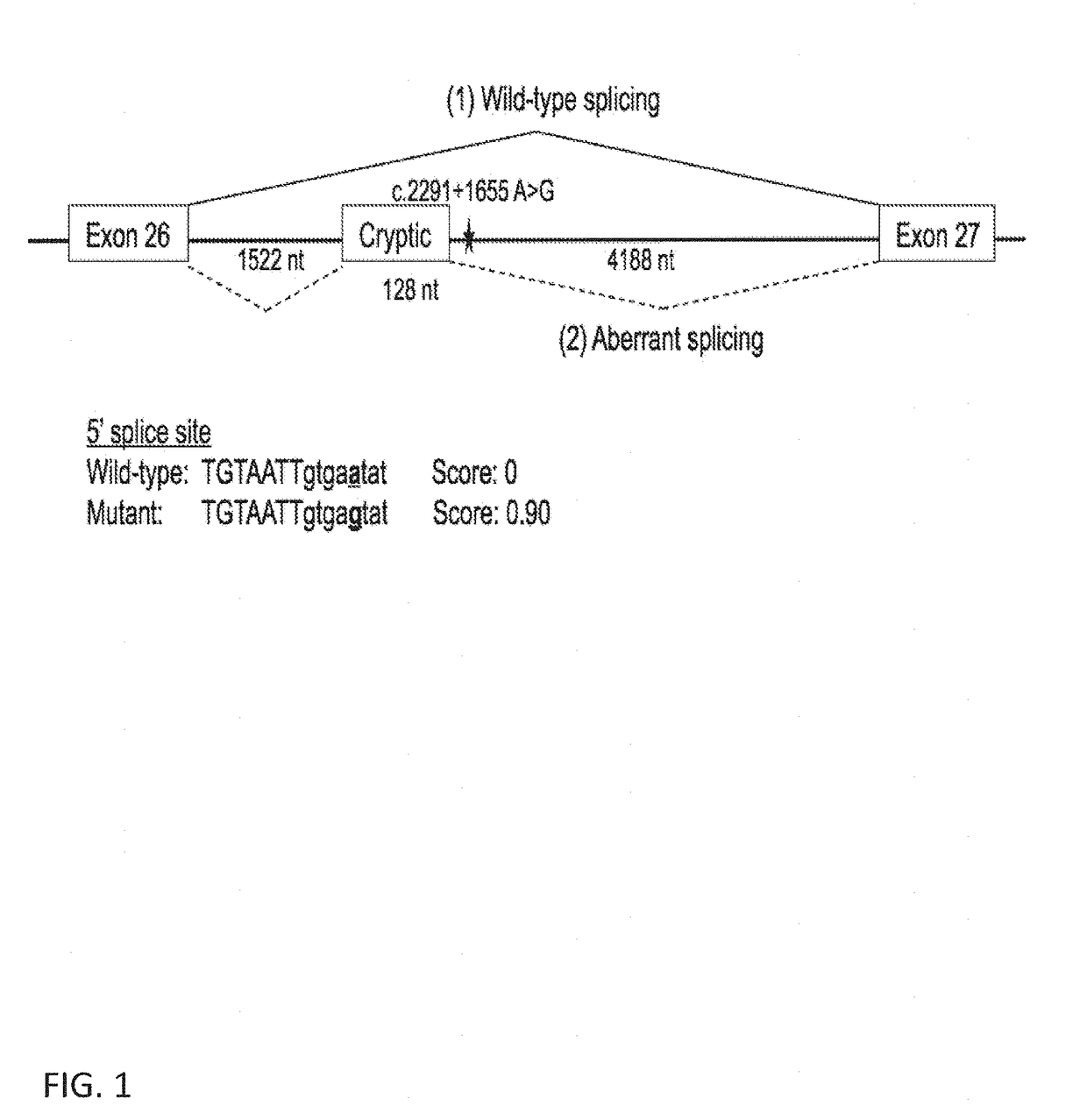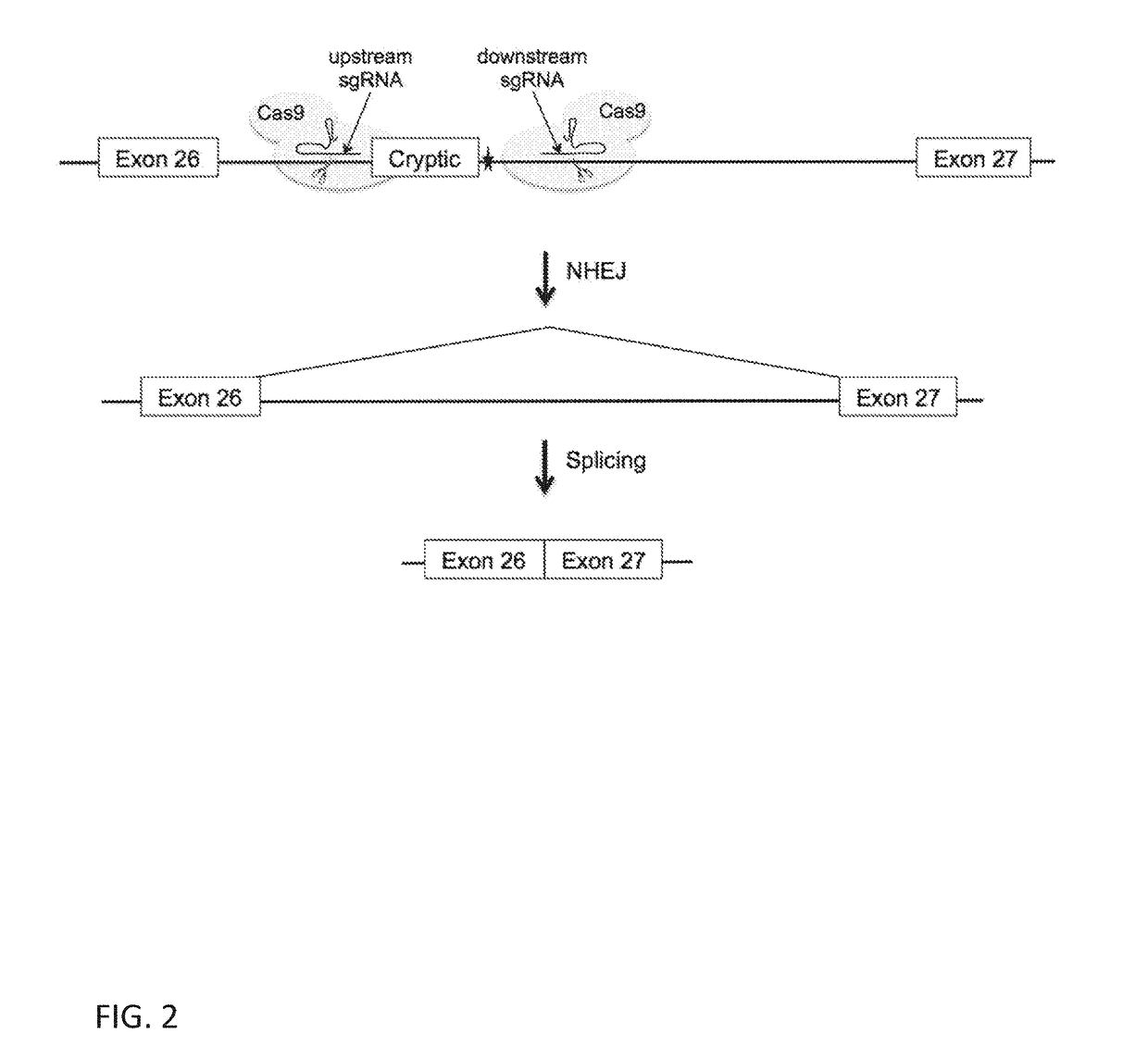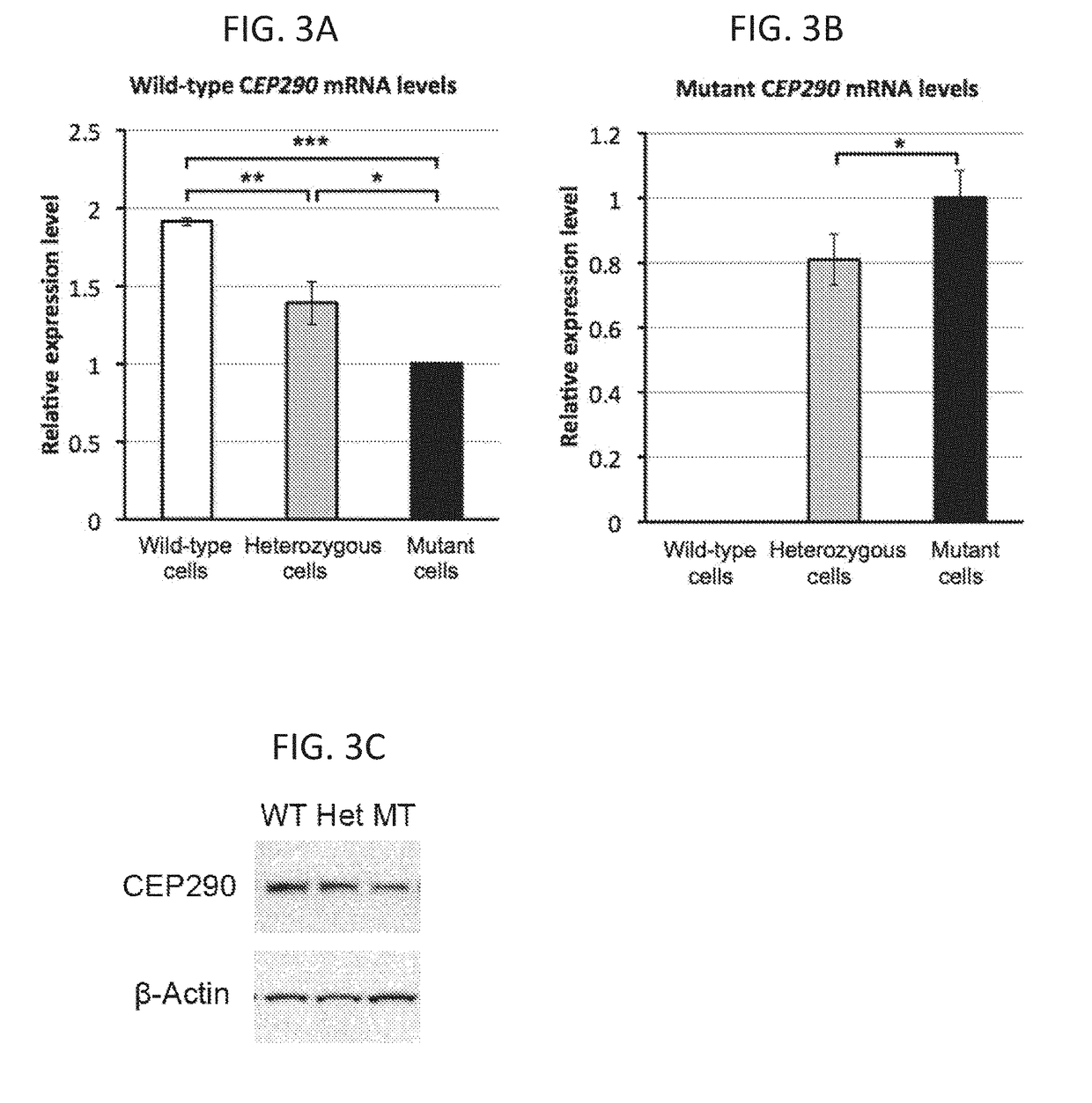Gene editing of deep intronic mutations
- Summary
- Abstract
- Description
- Claims
- Application Information
AI Technical Summary
Benefits of technology
Problems solved by technology
Method used
Image
Examples
example 1
g an In Vitro Model of Leber Congenital Amaurosis Using Crispr-Cas9 Technology
[0318]Methods
Plasmids
[0319]The pSpCas9 plasmid that expresses SpCas9 was ordered from Sigma (Catalog number: CAS9P-1EA). The BbsI restriction site in the BGH polyA was removed using the QuikChange Lightning Site-Directed Mutagenesis Kit (Stratagene) and a pair of mutagenesis primers (SEQ ID NOS: 28-29) following the manufacturer's protocol. A U6 promoter-BbsI:BbsI-sgRNA scaffold-U6 terminator cassette (SEQ ID NO: 30) was synthesized by GeneArt (Life Technologies) and inserted into the PciI and NruI restriction sites of the pSpCas9-BbsI null plasmid to generate a pSpCas9(BB) plasmid. The sgRNA oligos (SEQ ID NOS: 1-2) were then subcloned into the two BbsI restriction sites of the pSpCas9(BB) plasmid following the protocol described previously (Ran, F. A. et al. (2013) Nat. Protoc. 8:2281-2308).
Nucleofection
[0320]2.5 micrograms of the pSpCas9(BB)-U6-sgRNA plasmid DNA and 5 microliters of the ssODN (10 microm...
example 2
Deletion of the c.2991+1655 A>G Mutation
[0334]Methods
Plasmids
[0335]An all-in-one expression vector was constructed with the Golden Gate cloning method as previously described (Sakuma, T. et al (2014) Sci. Rep. 4:5400). Briefly, a DNA fragment that contains U6 promoter-BbsI:BbsI-sgRNA scaffold-U6 terminator-CMV promoter (SEQ ID NO: 33) was synthesized by GeneArt (Life Technologies) and inserted into the PciI and NheI restriction sites of the pSpCas9-BhsI null plasmid described above to generate a pSpCas9(BBU) plasmid that is used to subclone the upstream sgRNA guide sequences. To construct a pSpCas9(BBD) plasmid that is used to subclone the downstream sgRNA guide sequences, a PCR reaction was performed using the Phusion High-Fidelity DNA Polymerase (New England BloLabs Inc) with the pSpCas9(BB) plasmid DNA as the DNA template and a pair of PCR primers (SEQ ID NOS: 34-35). The cycling parameters were: 1 cycle at 98° C., for 1 min; 35 cycles of 98° C., for 20 sec and 72° C., for 30 sec...
example 3
g a Self-Limiting Crispr-Cas9 System to Limit the SpCas9 Persistence Time
[0346]Methods
Plasmids
[0347]An AAV packaging plasmid pAAV-minCMV-SpCas9-NLS-SV40 pA was constructed for the self-limiting Crispr-Cas9 system. Briefly, a DNA fragment that contains a minimal promoter fragment derived from the CMV promoter (minCMV promoter) (SEQ ID NO: 56) was synthesized by GeneArt (Life Technologies) and inserted into the MluI and ApoI restriction sites of the Sigma pSpCas9 plasmid described above to generate a pminCMV-SpCas9-NLS-BGH pA plasmid. Next, a DNA fragment that contains SV40 early poly(A) signal (SV40 pA) (SEQ ID NO: 57) was synthesized by GeneArt (Life Technologies) and inserted into the XhoI and BbsI restriction sites of the above plasmid to generate a pminCMV-SpCas9-NLS-SV40 pA plasmid. Finally, the minCMV-SpCas9-NLS-SV40 pA fragment was subcloned into an AAV packaging plasmid to generate a pAAV-minCMV-SpCas9-NLS-SV40 pA.
[0348]To construct self-limiting pSpCas9 plasmid, the recognit...
PUM
| Property | Measurement | Unit |
|---|---|---|
| Composition | aaaaa | aaaaa |
Abstract
Description
Claims
Application Information
 Login to View More
Login to View More - R&D
- Intellectual Property
- Life Sciences
- Materials
- Tech Scout
- Unparalleled Data Quality
- Higher Quality Content
- 60% Fewer Hallucinations
Browse by: Latest US Patents, China's latest patents, Technical Efficacy Thesaurus, Application Domain, Technology Topic, Popular Technical Reports.
© 2025 PatSnap. All rights reserved.Legal|Privacy policy|Modern Slavery Act Transparency Statement|Sitemap|About US| Contact US: help@patsnap.com



